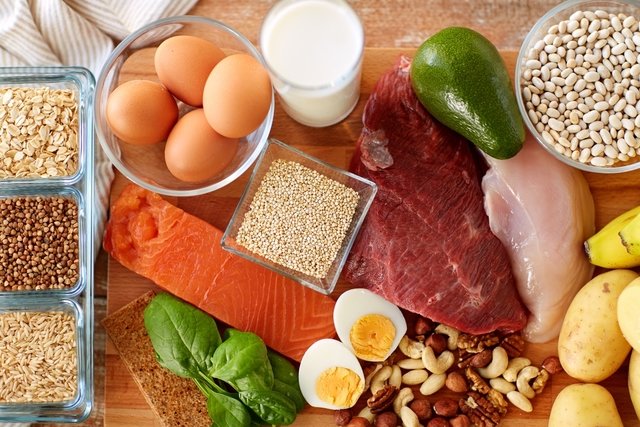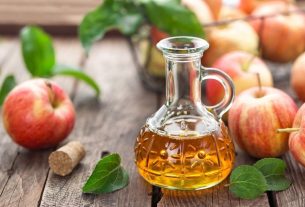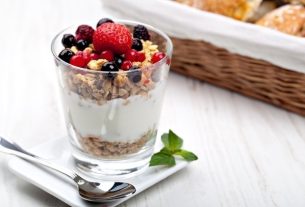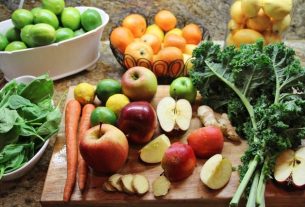Proteins are nutrients that have several functions in the body, such as forming muscles, producing antibodies, maintaining the health of skin, hair and nails and balancing hormones, for example.
Proteins can be classified as high biological value, which are those that contain essential amino acids in the appropriate proportion for the organism, or low biological value, when the presence of an essential amino acid in the food is insufficient.
Foods rich in protein are those of animal origin, such as meat, fish, eggs, milk and derivatives, and some foods of plant origin, such as soybeans, beans, chickpeas, peanuts, sesame seeds and lentils.
Read too: Foods rich in proteins: of animal and vegetable origin

Functions of proteins
The main functions of proteins are:
1. Build muscles
Proteins, such as actin and myosin, are essential for the contraction and formation of muscles. Thus, adequate protein consumption is essential for maintaining and increasing muscle mass.
The amount of protein recommended per day to maintain and gain muscle mass varies depending on the person’s weight and age, and the type and frequency of physical activities.
Read too: 11 Tips for Gaining Muscle Mass (faster)
2. Produce antibodies
Immunoglobulins are proteins that act as antibodies and bind to viruses and bacteria, helping to fight diseases and infections. Mucins and fibrinogen are defense proteins that protect the body’s mucous membranes and act in blood clotting, respectively.
In addition to adequate protein intake, other nutrients such as zinc, selenium and omega-3 are also important for the production and maintenance of antibodies.
3. Balance hormones
Proteins help balance hormones because they participate in their formation. Some hormones formed by protein are insulin and glucagon, which regulate blood glucose levels; calcitonin, which regulates calcium metabolism; and growth hormone, which plays a role in the development of children and adolescents.
4. Transport oxygen and nutrients
Hemoglobin and myoglobulin are proteins that transport oxygen in the blood and muscles. Therefore, consuming proteins helps to avoid problems such as anemia, weakness, paleness and lack of energy.
Lipoproteins are proteins that transport cholesterol, triglycerides and fat-soluble vitamins. Transferrin acts in the transport of iron and albumin is responsible for the transport of fatty acids and hormones.
5. Maintain joint health
Collagen is a protein that makes up tendons and works as a shock absorber between bones, maintaining joint health, preventing wear and tear and the emergence of pain. See what collagen is for and when to use it.
6. Provide energy
In addition to carbohydrates and fats, proteins can also be used to provide energy for the body, especially in diets low in carbohydrates and/or fats. Each gram of protein provides 4 calories, the same amount provided by carbohydrates.
7. Maintain nervous system health
Proteins help maintain the health of the nervous system, as they are components of neurotransmitters such as adrenaline and acetylcholine, which are responsible for transmitting the nerve impulses that generate thoughts, emotions and commands that make the entire organism function properly.
8. Heal wounds and surgeries
Proteins are essential for the formation of new tissues, blood vessels, connective tissue and cells, thus helping to heal wounds and surgeries.
Therefore, it is essential to maintain adequate protein consumption after the appearance of wounds or after surgery, such as bariatric surgery, cesarean section and organ transplantation, for example.
9. Maintain healthy skin, nails and hair
Collagen is a protein that gives firmness to the skin, preventing sagging and the appearance of wrinkles and expression marks.
Keratin is a protein that makes up hair and nails, strengthening them and preventing situations such as broken nails and hair loss.
Protein-rich foods
Some of the foods rich in animal and vegetable proteins are meat, milk, yogurt, beans, peanuts, almonds, soybeans and chickpeas. See a list of foods rich in animal and vegetable proteins.
To learn more about foods rich in protein, watch the following video:
Types of Protein
The types of protein vary depending on the proportion of amino acids present in the food:
1. Proteins of high biological value
Proteins with high biological value are those that contain essential amino acids, which are those obtained exclusively from food, in the appropriate proportion for the body. Learn more about essential amino acids.
Some examples of high biological value proteins are meat, milk, cheese, yogurt, chicken, fish and eggs.
2. Proteins of low biological value
Proteins are classified as having low biological value when they have insufficient essential amino acids. Proteins with low biological value are mainly those of plant origin, such as legumes, grains, oilseeds, seeds and vegetables.
Therefore, in vegetarian diets, it is recommended to combine different sources of vegetable proteins to increase the biological value of proteins. Some examples of combinations are: lentils with rice, rice with beans and pasta and chickpeas, for example.
Recommended daily amount
The recommended daily amount of protein varies according to the person’s age and weight, as follows:
- Children aged 7 to 12 months: 1.2 g of protein for each kg of body weight per day;
- Children aged 1 to 3 years: 1.05 g of protein for each kg of body weight per day;
- Children aged 4 to 13: 0.95 g of protein for each kg of body weight per day;
- Teenagers aged 14 to 18: 0.85 g of protein for each kg of body weight per day;
- Adults 19 and over: 0.80 g of protein for every kg of body weight per day.
Additionally, during pregnancy, a woman should consume 1.1 g of protein per kg of body weight per day. Women who breastfeed need to ingest 1.3 g of protein per kg of body weight per day.

Sign up for our newsletter and stay up to date with exclusive news
that can transform your routine!
Warning: Undefined array key "title" in /home/storelat/public_html/wp-content/plugins/link-whisper-premium/templates/frontend/related-posts.php on line 12
Warning: Undefined array key "title_tag" in /home/storelat/public_html/wp-content/plugins/link-whisper-premium/templates/frontend/related-posts.php on line 13



